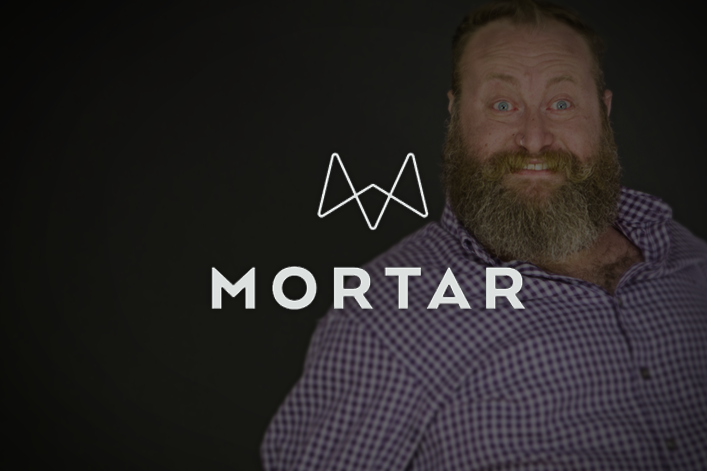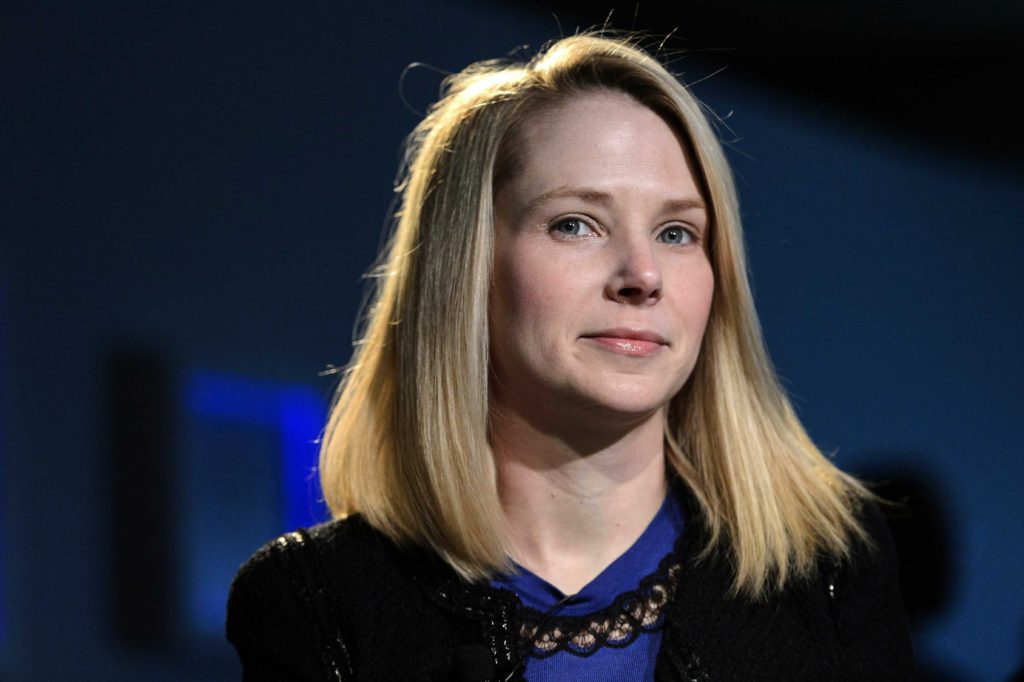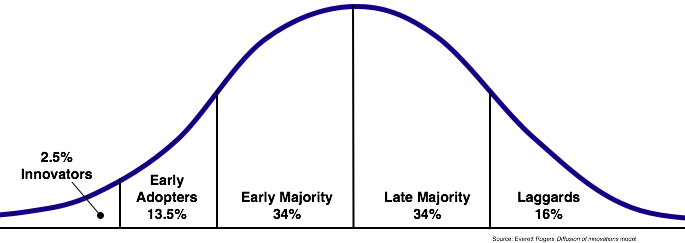|
Category: Advertising San Francisco
January 14th, 2017

Careful Mortar watchers (that’d be both of you, so listen up) will have caught the stealthy launch of the new Mortar website on the very last day of 2016.
Now I realize this will come as a shock to the rest of you, but THERE IS A NEW MORTAR WEBSITE! THE BACON IS GONE.
We’ve replaced the pile of pork with a simple insight: most of the time small ideas beat big. And marketers still don’t spend enough time aiming at the emotional impact they want to have on their customers.
Now why would this be?
- We forget our job is to amaze and delight. There’s a lot to say about our companies, our products, our vision, and our contribution to the planet. So much that we forget we actually want people to buy our thing. And for that to happen we must first get their attention. The simple pressure of communicating what’s important to us overwhelms our need to prick the needle of delight.
- People don’t actually buy ideas until late in the funnel. At first they buy delight. Joy. Fun. Awesome. A client of ours spent hundreds of thousands and months researching why people came to her organization only to find that her customers were looking for fun. Fun? Not an educational experience? Or a new perspective? Or to be a better citizen. Just a plain old great way to kill a few hours and giggle. You see, great marketing promises a result. If you haven’t defined how you want people to react when they hear of you then you are not ready to go to market. (Doubt me? Dig out a recent agency brief and scour it for something resembling the A-ha Moment you want your customers to experience).
- Small is easier and simpler than Big. Big is bold. Big is dramatic. Big costs money and time. Big requires hard thinking, consensus, commitment and a willingness to change. Big is thus hard. For most, Big is simply too hard. Small? Small is easy to find. Easy to execute. Easy to change. Easy to replicate. Easy to test and adjust. And Small is not hard on a CEO who changes his mind, like, well, every week. (Which BTW is most of us now.) Nevertheless the right small idea can have immense power (hello Uber, who spun a small app into a revolution in global transportation).
For many of us, the future is about finding and exploiting A-ha Moments. We’ve gathered some of our best A-ha Moments on our new site. Take a look and see if you might benefit from thinking smaller in 2017.
– This article was originally published on LinkedIn.
October 2nd, 2016

More Mortar clients are complaining about selling to Millennials. And that got me wondering: what do the pundits have to offer on how to approach today’s Millennial?
Unlike previous generations, Millennials grew up with the promise of instant and frictionless access to information and one another. As a result, they are more likely to think differently about what it means to “own” something. Writing in Fast Company, Josh Allan Dykstra writes that “this new attitude toward ownership is occurring everywhere, and once we recognize this change, we can leverage it. Instead of kicking against the wave (which is the tendency of many institutions and leaders), we can help our organizations thrive in this strange new marketplace by going with the flow and embracing the death of ownership”.
Look, Dykstra emphasizes, ownership just isn’t hard anymore: “We can now find and own practically anything we want, at any time. Because of this, the balance between supply and demand has been altered, and the value has shifted”.
We know the experience of acquisition matters a lot to us now, and this is especially true of Millennials: How we find out about and buy a product can be as important as what we actually do with it. For example, just consider how much time the modern marketing suite now spends in user experience discussions. Indeed for some eco-conscious customers what we do after we own a product can also be pivotal (like how do we dispose of all that ugly packaging that comes with every Amazon delivery?).
Facebook reminds us that experience is additionally powerful because of how it connects us to others. Our purchases have greater impact because we can perhaps do something worthwhile, tell others about it, and have it say something meaningful about us and our motivations.
Our newest customers, then, approach ownership differently, encourage us to think beyond purchase through to the act of use, and what the conversation might be around our product and the experience we provide.
Here are five of the more obvious ways Millennials buy differently—along with some tips on what Marketers might be able to do to take advantage of the change:
1. Millennials are more likely to buy things because of what it says about them.
The product or service we deliver can help people do something significant that goes beyond actual use. Method, Seventh Generation, ZipCar, Southwest Airlines have all built brands around a superior and differentiated view of what their customer wants. Action: Make sure you tell your customers what their purchase actually says about them: look for ways to connect your product to something they will find meaningful and compelling. Mortar’s repositioning of Fair Trade USA leveraged this insight with “Every Purchase Matters” tagline.
2. Millennials buy things because of what they can tell others about it.
Of course there’s a social piece to owning something that is ever more vibrant. The joy isn’t all in the having it is in the sharing. When we share something we like with others we create a bond that is meaningful—and “the goodwill created in that moment expands to encompass our brand and our business in general”. Action: Start to think of your employees, their families, your customers, commentators, prospects and maybe even rivals, as a community of like-minded people coming together to achieve something new and important. Tell prospects more about what their purchase could say about their work and their position in the community. Give your community more opportunities to share the news of their finds. And be responsive to feedback. Witness Mortar’s client Chef Software leverages community to spread the power of increased automation in IT..
3. Millennials are more apparent about their values.
Millennials are very open about how their values shape behavior. As Dykstra indicates this maybe “explains why so many Millennials are moving to Urban areas. Although it is tempting to see the return to the cities as anti-car, instead, it could be more about all the other things a “non-car life” represents: it helps Millennials be more environmentally conscious, socially aware, and local. This distinction of purpose may seem nuanced, but motivation is a powerful differentiator (perhaps one of the most powerful)”. Action: Understand the values that drive your audience. Connect people to something bigger than themselves through your product or service. Our work for San Francisco’s famed Exploratorium museum is obviously designed to help its community enjoy learning about their environment with a special emphasis on science, but not so clear–but nevertheless critical–is the hidden appeal to building an informed citizenry through increased engagement.
4. Millennials hate to wait.
We all hate to wait. But Millennials have grown up in an age of abundant choice and easy switching. Waiting for them is not just a chore it is an offense and an indication you just don’t care. Action: Take a look at how you engage with your customers and prospects and implement new tools that will enable you to message customers when they are on your website, respond in real-time to questions. Be flexible and authentic with your responses. Wired indicates that more than 50% of customers will abandon their cart on the spot if they can’t get a question answered immediately.
5. Millennials love to shop on their smartphone.
Mobile is the platform of choice for most of us, and this is certainly true of Millennials. Indeed, pundits point out that Millennials just aren’t using their desktop computers as much. And they are not alone: how many of us grasp our iPhone’s like our lives depend on them? Action: make sure your mobile experience is awesome.
As Toffler warned in Future Shock, technology disruption happens fast—but it takes society a long time to catch up and adjust to changes in behavior. Amidst all the concern about selling to young buyers lurks an incredible opportunity to differentiate and grow. Don’t be one of those leaders who thinks they can thrive by ignoring the fastest growing part of their market
July 30th, 2016
Isn’t it time we stopped thinking about people as consumers, customers, clients or, heaven forbid, a target audience.
And started thinking about them as a community.
A group of like-minded souls with the power to engage with your organization, your products and with each other?
By helping our clients tap community, we’ve helped create over $14 billion in market value.
From software to security; self-improvement to longevity; destinations and experiences; Mortar has focused on tapping the power and potential of our client’s and their communities.
Think about it. If we are aiming our messages at a community we need to think of our audience in that way. As people who talk to one another. About us.
And we are all talking to communities. Sure, each of us is interested in a different sub-set of humanity.
Whether we divvy up our customers by job title, culture, affinity, identity, location or some other factual or emotional profile, our customers are best thought of as a group. Community members chatter with one another about what they see and experience in text, Instagram, on Facebook, on Twitter, Tumbler and at the coffee shop.
Which means that we marketers should think of ourselves as community managers and leaders. As Mayors. Senators. Congressmen. PTA stewards. Chefs. Generals. Mothers. Fathers. Leaders. Educators.
If we miss this essential step we fail to understand who we are talking to and, it follows, what really matters to them. Which is why so much of what marketers say—either directly or through their agents—falls flat and fails to inspire.
Communities are shaped by common beliefs, a level of affinity and similarity. Every community has a special kind of connective bond. The links we share, the invisible dark matter that cements one human to another, is the raw material of great marketing.
Mortar is an advertising agency. Yes, an advertising agency. We don’t apologize for being what we are. And neither do we let it keep us up at night. Our job is to persuade, cajole, brighten or otherwise compel communities to buy what our clients are selling.
What sets us truly apart is in our name: Mortar. We are all about the glue that binds groups to action, thought to outcome, products to change.
We believe every single marketing assignment needs to start with deciding what unites the community we care about. Then we can make Strategic Marketing Decisions about how we will approach the group: what has the capacity to drive them wild with desire.
We enshrine this strategic decision in writing. And we match it with a sudden gasp of surprise—a A-ha moment. You will understand it as the moment a promise connects with an individual and fuels a conversation.
These three elements: a belief that connective tissue is the key to understanding today’s customer, that a decision must be made about which way to go, and that everything needs to ladder up to a single a-ha moment, differentiate our work.
None of it makes sense without a solid, unyielding, firm grasp of what unites—and separates.
July 25th, 2016

Yahoo! is going to join AOL in Verizon’s growing stack of web businesses. As one commentator chirped “the 90’s are alive and well at Verizon“. But if you are like me, you will be struck by how uncharitable today’s coverage is of Marissa and her Yahoo turn around.
- She did it. Perhaps the first thing everyone is missing is that Mayer solved the Yahoo problem. Yahoo was going nowhere fast until this morning. Now it has a new lease on life, a parent who understands the future will be mobile and social, and no more pesky, activist VCs. The problems of a looming tax bill for Alibaba’s incredible success appear to go away too (Mayer inherited a 15% stake in Alibaba that is now worth $28 billion—sparking concerns the struggling internet giant would redirect its gains in shoring up Yahoo’s business).
- She netted a $4.8bn price tag for Yahoo… which, yes, was worth $200 billion back in the day. But that day is some 20 years and a Google and Facebook ago. Yahoo has suffered for years because of the mistakes the company made long before Mayer. (Well if you can call failing to buy Google and Facebook a mistake: because to be charitable, there were a lot of companies who dropped that clanger—Apple, IBM, Oracle, Hearst, Rupert Murdoch to name a few). Web businesses age in dog years: in Silicon Valley 20 years is a lifetime.
- And she managed to have three babies in the course of her tenure as CEO. That fact alone should be stirring the voices of support and awe. If we are at all serious about the continued ascendancy of women to the executive branch of our society, Marissa Mayer did arguably more on that front than most.
- She resolved Yahoo!’s identity crisis. Mayer introduced the term MAVENS to describe the company’s focus on advertising sales in mobile, video, native advertising, and social. Yahoo was always a media company. Even from the early days when it was home to a legion of web surfers who individually classified websites by hand (how ridiculous does that sound now?), despite efforts to move it more into the engineering camp, Yahoo was never a software powerhouse. Yahoo started off as a media company and it grew with its culture. Even attracting Terry Semel from Warner Bros, as one of Mayer’s four predecessors. Yahoo is a media company—which means it lives and dies by advertising revenue–and the future of media is mobile and social. Mayer realized that as quickly as her rivals at Google and Facebook. Only she had to drag her company dragging and kicking into the MAVENS age.
- She admirably played her role as the top executive for the Yahoo community. I am reminded by her decision to give the community a voice in the redesign of the Yahoo logo—which she accomplished by survey. But unlike less savvy rivals she did not make the results public—opting instead to thank the community for making their voice known and acknowledging the community did play some role in the final decision. Masterful. Contrast her actions as leader of that community with, say, how well Reddit handled their recent issues and it’s clear that Mayer does know a thing or two about being an incredibly visible and high profile spokesperson for a community that lost its relevance in Silicon Valley years ago. Let’s remember, communities that started hot but come to be regarded as irrelevant tend to be resentful and inwardly-focused (for an example consider my fellow British countrymen’s horrendous decision to allow the fear of immigration to drag them out of the European community). Playing spokesperson for a global group struggling to be sexy and cool again is a tough gig, no matter how you cut it.
So as you review the coverage over the next few weeks, this commentator believes Marissa Mayer deserves a hearty round of applause for solving the hardest problem in marketing: how to turnaround a failing internet brand.
Bravo, Marissa.
February 25th, 2016

We have spent many an hour mulling over how to exploit Moore’s Chasm theory.
But many, many more hours cursing the dynamics of the early market.
In particular, we wrestle with early adopters’ infatuation with all things new and their inability to stay loyal to ideas over time.
You see, the first buyers are often visionary in character, attracted by revolutionary change, comfortable with half-baked features and totally cool with the untested, unfinished.
They’re also needy, goal obsessed, and keen to brag. Especially about being the first on the block to grab innovation by the horns and wrestle it into submission.
They will always be among the first to quit.
Visionaries like to jump onto the next big thing. And that can be a problem. The early market is a dynamic, fickle force which can be hard to tame and even harder to keep caged.
 Source: Wikipedia Here are five things about the early market most overlook:
- The early market is always in the minority. If you talk to 100 people about your new product, only 10 will say it’s awesome. 90 will tell you it sucks. Or worse, they won’t even know it’s there. 90% rejection is hardly compelling evidence that you’re onto something.
- People who sell to the early market are rarely comfortable selling to the early market. Your team, those stalwarts who have chosen to join you on the front line of change, they too are surrounded by doubters and skeptics. So is your Board. And your investors. They want guarantees. Or at least promises. They will all push you to go for the money. Now. And the money lies in the fattest part of the Bell Curve with the elusive majority. So why aren’t you selling there now? Moore urges caution and the need to establish a beachhead first. But to do that is to sit back while someone else exploits the fat found in the middle of the herd!
- The early market is way different from the late market. To find where you are on the curve, it’s important to understand the differences between the two groups. Somewhere in your product’s journey to success is a gap. It lies between the radicalized, crazy, fanatical first-customers and their more prudent, careful, and risk-averse brethren. Pragmatists don’t trust visionaries. They think visionaries are crazy. And pragmatists bore visionaries with their endless prattling about avoiding risk and loading up your product with check-box features. Yet, significant numbers of pragmatists have to be swayed by visionaries for an idea to root and blossom.
- The traffic moves in one direction: from left to right, early to late. Ideas move from new to old. They are birthed. They grow. Mature. And eventually pass into the mainstream. And after a while they wither and die. The point here is that they rarely pass from mature to death and back to sexy again. Which means it can be hard for a new idea to retrace its steps, especially when the gloss has worn off.
- Your industry is not any different. Don’t fight the theory, embrace it. We have been teaching diffusion theory since Rogers first published Diffusion of Innovations in 1962 (check this out). It’s hardly a new idea or a novel expression of market development. The principles are tried and tested. Sure you can break into a market by penetrating the middle: but it takes a lot of money. That’s why so many Super Bowl advertisers are major, established brands — Coke, Pepsi, Jeep, Bud — and why so few companies trust debuting a novel idea in a $3 million commercial. So if you are outside the mainstream, you can gain a significant advantage by embracing the lessons of market adoption theory and watching your own customers for the telling signs of quivering, flighty pioneerdom. And even find ways to cross the chasm to that big, fat majority market. But more on that in another piece.
That’s how we see it. Join the conversation. #whatifmortar
|




